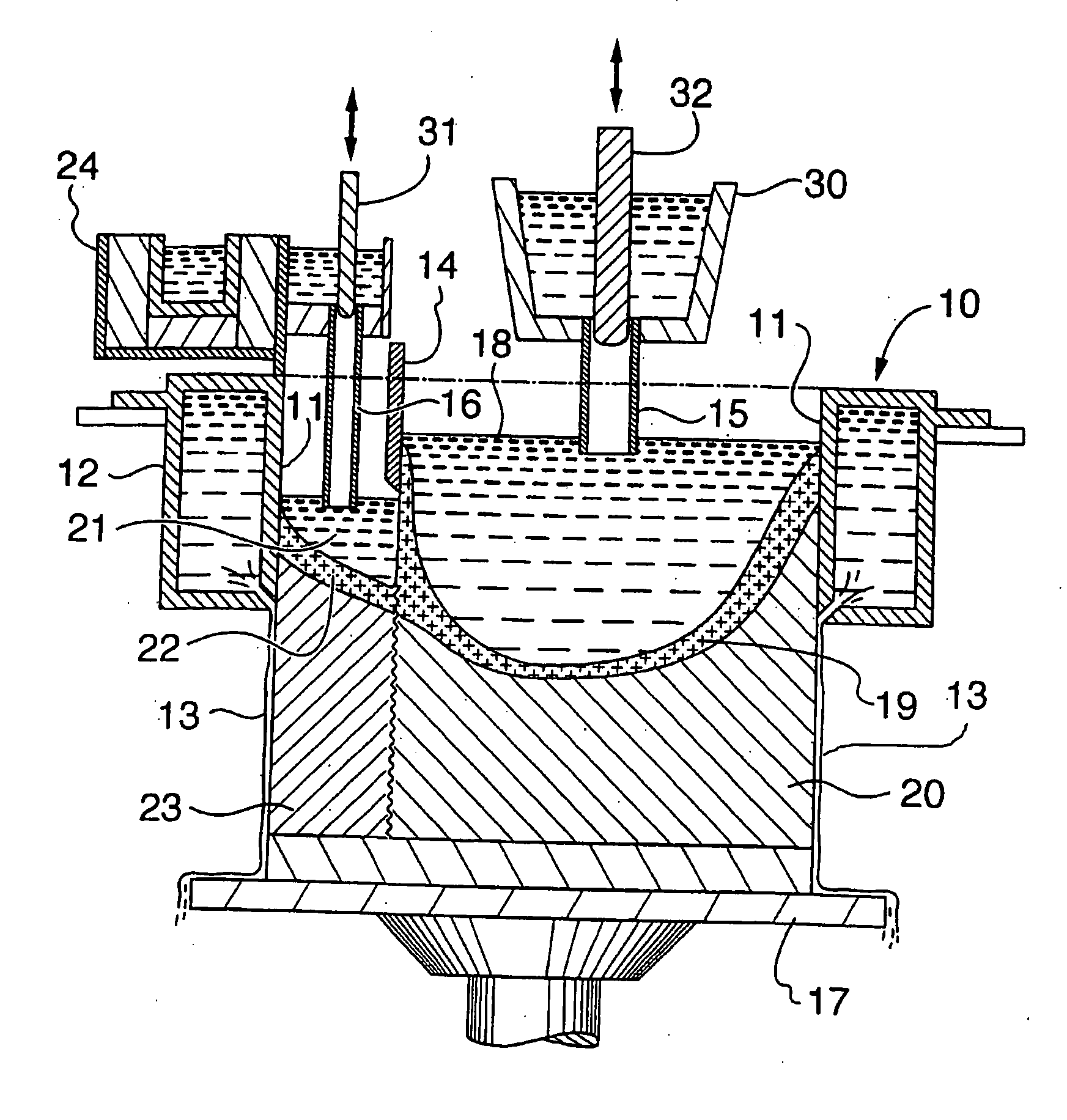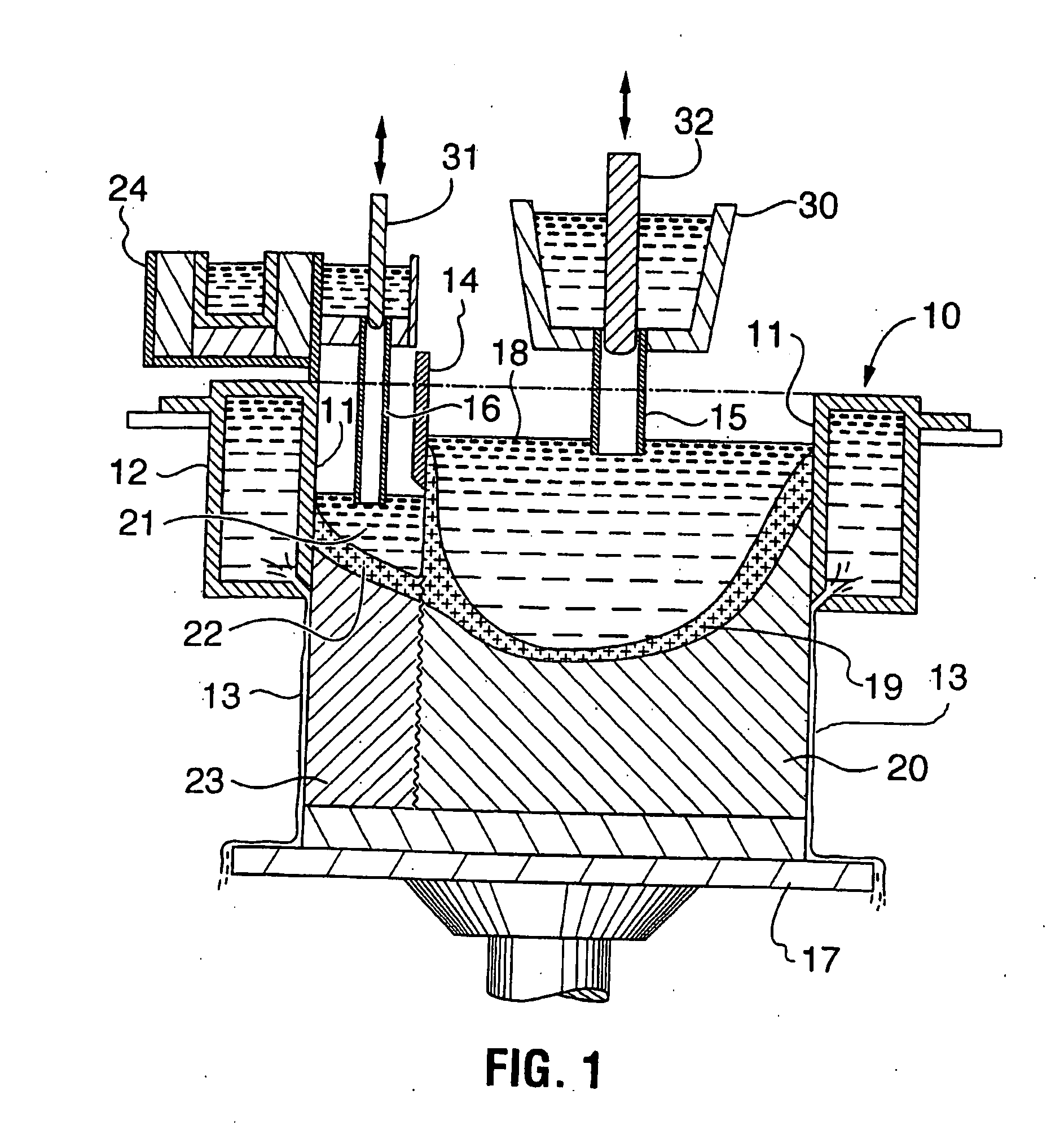Cladding ingot to prevent hot-tearing
a technology of ingots and cladding, which is applied in the field of casting metals, can solve problems such as substantial commercial disadvantages during ingot manufacturing
- Summary
- Abstract
- Description
- Claims
- Application Information
AI Technical Summary
Problems solved by technology
Method used
Image
Examples
Embodiment Construction
[0041] The present invention makes it possible to control hot-tearing in a way that eliminates the need for grain refiners or that, at least, minimizes the required content of such materials. This result is achieved by co-casting a layer of cladding metal onto a core ingot using the same metal both for the cladding layer and the core ingot. This is especially effective when carried out using the co-casting apparatus described in U.S. Patent Publication No. 2005 / 0011630, published on Jan. 20, 2005 in the name of Anderson et al. (the disclosure of which is incorporated herein by reference). This apparatus makes it possible to co-cast metals to form a core ingot and a cladding layer and to produce a substantially continuous metallurgical bond between the metal layers.
[0042]FIGS. 1 and 2 of the accompanying drawings show the co-casting mold assembly of the Anderson et al. publication in elevation and partial cross-section. The figures show a rectangular casting mould assembly 10 that h...
PUM
| Property | Measurement | Unit |
|---|---|---|
| weight | aaaaa | aaaaa |
| temperature | aaaaa | aaaaa |
| solidus temperature | aaaaa | aaaaa |
Abstract
Description
Claims
Application Information
 Login to View More
Login to View More - R&D
- Intellectual Property
- Life Sciences
- Materials
- Tech Scout
- Unparalleled Data Quality
- Higher Quality Content
- 60% Fewer Hallucinations
Browse by: Latest US Patents, China's latest patents, Technical Efficacy Thesaurus, Application Domain, Technology Topic, Popular Technical Reports.
© 2025 PatSnap. All rights reserved.Legal|Privacy policy|Modern Slavery Act Transparency Statement|Sitemap|About US| Contact US: help@patsnap.com



